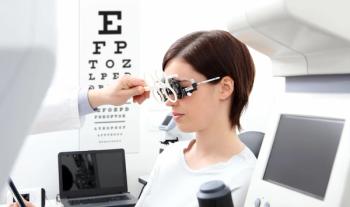
SELECT trial scares patients away from fish oil
By now, we have all heard about the SELECT trial and the ensuing media fish-oil frenzy concerning prostate cancer.1 A broad cross-section of industry and academic experts has slammed this study as nonsense. The SELECT study was a secondary analysis study that did not provide subjects with fish oil supplements nor monitor what type of fish or fish oil supplements were consumed
By now, we have all heard about the SELECT trial and the ensuing media fish-oil frenzy concerning prostate cancer.1 A broad cross-section of industry and academic experts has slammed this study as nonsense. The SELECT study was a secondary analysis study that did not provide subjects with fish oil supplements nor monitor what type of fish or fish oil supplements were consumed. The authors were quick to publicly blame fish oil supplements and condemn nutritional supplements in general.
The SELECT study group did not determine whether or not subjects actually had prostate cancer, nor did they adjust for known predictors of prostate cancer. The SELECT study used plasma levels of EPA/DHA, which are poor predictors of medium and long-term essential fatty acid dietary intake (RBC tests are more accurate). The SELECT study conclusions were based on a mere difference of 0.2 percent omega 3 blood plasma phospholipid fatty acid. The SELECT trial found an implausible counter-intuitive benefit from omega 6 fatty acids (considered pro-inflammatory), as well as trans fats. The SELECT study was an observational statistical study that said nothing about causality, cause, and effect. The SELECT study fails the “face value validity test.” If the results were true, countries that consume huge amounts of fish, such as Japan, would have huge amounts of prostate cancer, which is clearly not the case.
The worst part is that our media swallowed this study hook, line, and sinker and parroted the bogus conclusions and may have scared men away from fish oil supplements. Multiple studies have found a protective effect of fish and fish oil consumption against prostate cancer.2-4 When reporters grab a headline and sound-bite proclamations without stating the results in scientific context, it is individual patients who suffer the consequences. The conclusions of AREDS 2 with respect to fish oil were “null” in contradistinction to AREDS 1 post hoc data and the preponderance of biological and epidemiologic evidence showing a benefit of fish and/or fish oil supplementation in age-related macular degeneration.5 That story also remains to be reported in depth, as well.ODT
References
1. Brasky TM, Darke AK, Song X, Tangen CM, et al. Plasma phospholipid fatty acids and prostate cancer risk in the SELECT trial. J Natl Cancer Inst. 2013 Aug 7;105(15):1132-41.
2. Norrish AE, Skeaff CM, Arribas GL, Sharpe SJ, et al. Prostate cancer risk and consumption of fish oils; a dietary biomarker-based case-control study. Br J Cancer. 1999 Dec;81(7):1238-42.
3. Augustsson K, Michaud DS, Rimm EB, Leitzmann MF, et al. A prospective study of intake of fish and marine fatty acids and prostate cancer. Cancer Epidemiol Biomarkers Prev. 2003 Jan;12(1):64-7.
4. Chavarro JE, Stampfer MJ, Hall MN, Sesso HD, et al. A 22-y prospective study of fish intake in relation to prostate cancer incidence and mortality. Am J Clin Nutr. 2008 Nov:88(5):1297-303.
5. Age-Related Eye Disease Study 2. Lutein + zeaxanthin and omega-3 fatty acids for age-related macular degeneration. JAMA. 2013;309:2005-2015.
Newsletter
Want more insights like this? Subscribe to Optometry Times and get clinical pearls and practice tips delivered straight to your inbox.















































.png)


